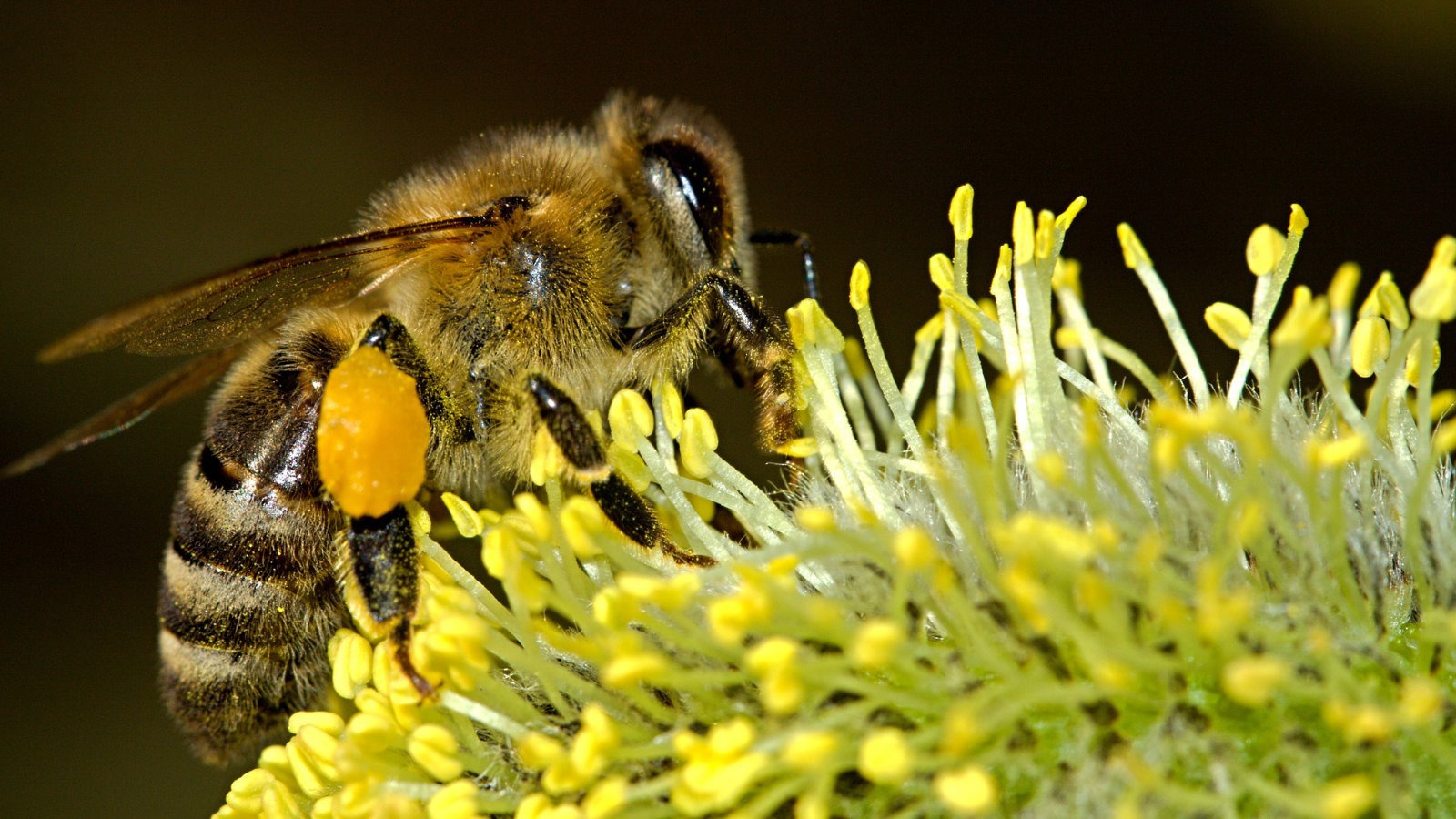Honeybees, though striped like bumblebees, look very different, being generally smaller and slimmer. Sometimes they are mistaken for wasps but honeybees are hairier and have pale thin stripes, not the very bright yellow and black stripes associated with wasps.
Male honeybees are called drones and are much bigger than the female workers with obviously bigger eyes. The queen bee is the biggest of all with a really long abdomen where she produces all her eggs.
Overview
Honeybees live in hives, these days most honeybees are farmed and their hives are man made but some do still live in the wild.
The nests of honeybees survive over many years. Unlike bumblebees the whole colony hibernates over winter, huddling together to keep warm.
The queen sets up the hive by laying lots of eggs to build up a colony of female workers, up to 40,000 in one hive, who collect pollen and nectar from flowers to feed the rest of the hive. Over the summer the female workers build up huge stores of honey which they will use to keep them going over the winter, the excess that they don’t need to survive is what is harvested by bee keepers to provide us with honey!
In the summer the queen will lay a few hundred unfertilised eggs which will then become male bees, they do very little within the hive other than eating and thinking of female bees!
Apart from the queen, who can live for up to five years, individual bees only live for around 8 weeks so the queen is always busy laying eggs to keep the colony going.
Leading up to winter the queen will lay less eggs so that there is more space in the hive for food and fewer hungry mouths to feed over the cold months ahead.
Honeybees can be ferocious stingers because they are protecting their precious food supplies from other thieving animals. When a bee stings you it sends out a special scent (a pheromone), which alerts the other bees in the hive to danger.

In the Garden
Bees love a good variety of flowering plants in and around the garden. Having a mixture of plants that flower at different times of year ensures there is always a good source of pollen for the hive.
As with bumblebees the honeybee is threatened due to the loss of flower rich gardens, increased use of pesticides and the intensive mowing of grass verges but they are also threatened by disease brought in from the import of foreign bees.
If you are really interested in honeybees why not become a beekeeper or allow a local beekeeper to use your garden for their hives.
The bees will keep your garden looking nice by pollinating your flowers, fruits and vegetables as well as giving you lots of honey!!
Did you know?
- A queen honeybee can lay up to 2000 eggs a day!
- Worker honeybees dance when they return to the hive to show the other workers where the best flowers are for collecting food.
- Apparently if you eat local honey it can help prevent hay fever as it contains the pollen of local flowers.
- The hexagonal shape of the cells constructed by honeybees provides the maximum storage capacity for the minimum amount of work.